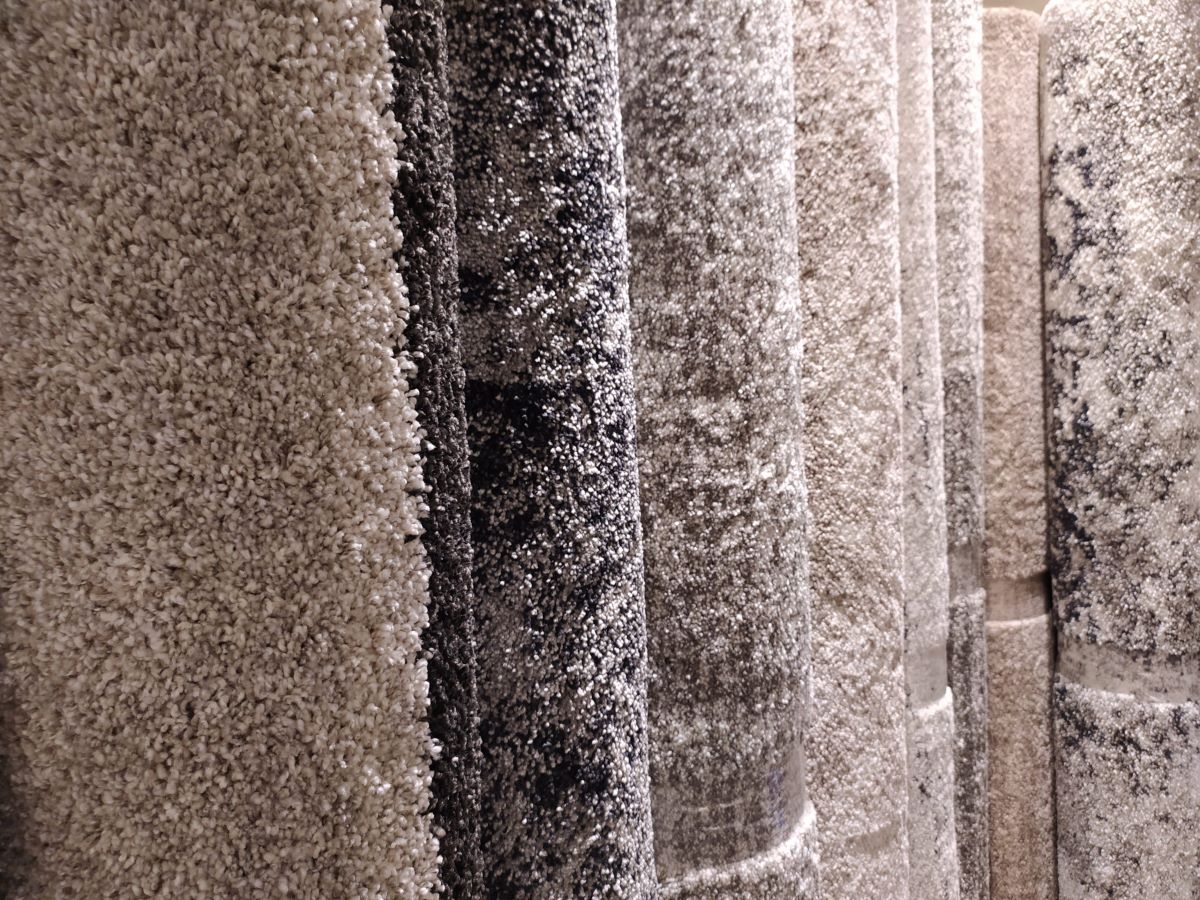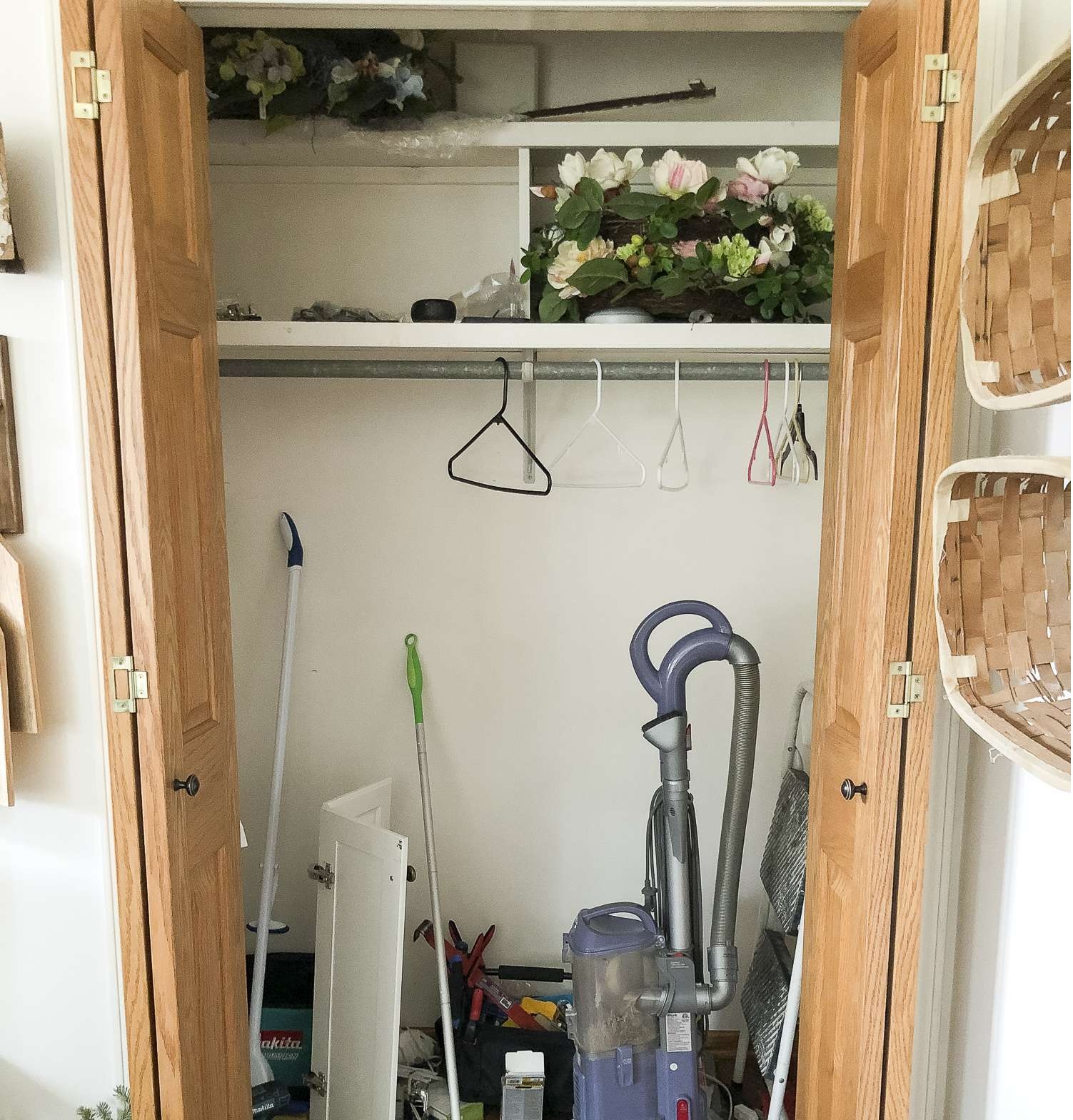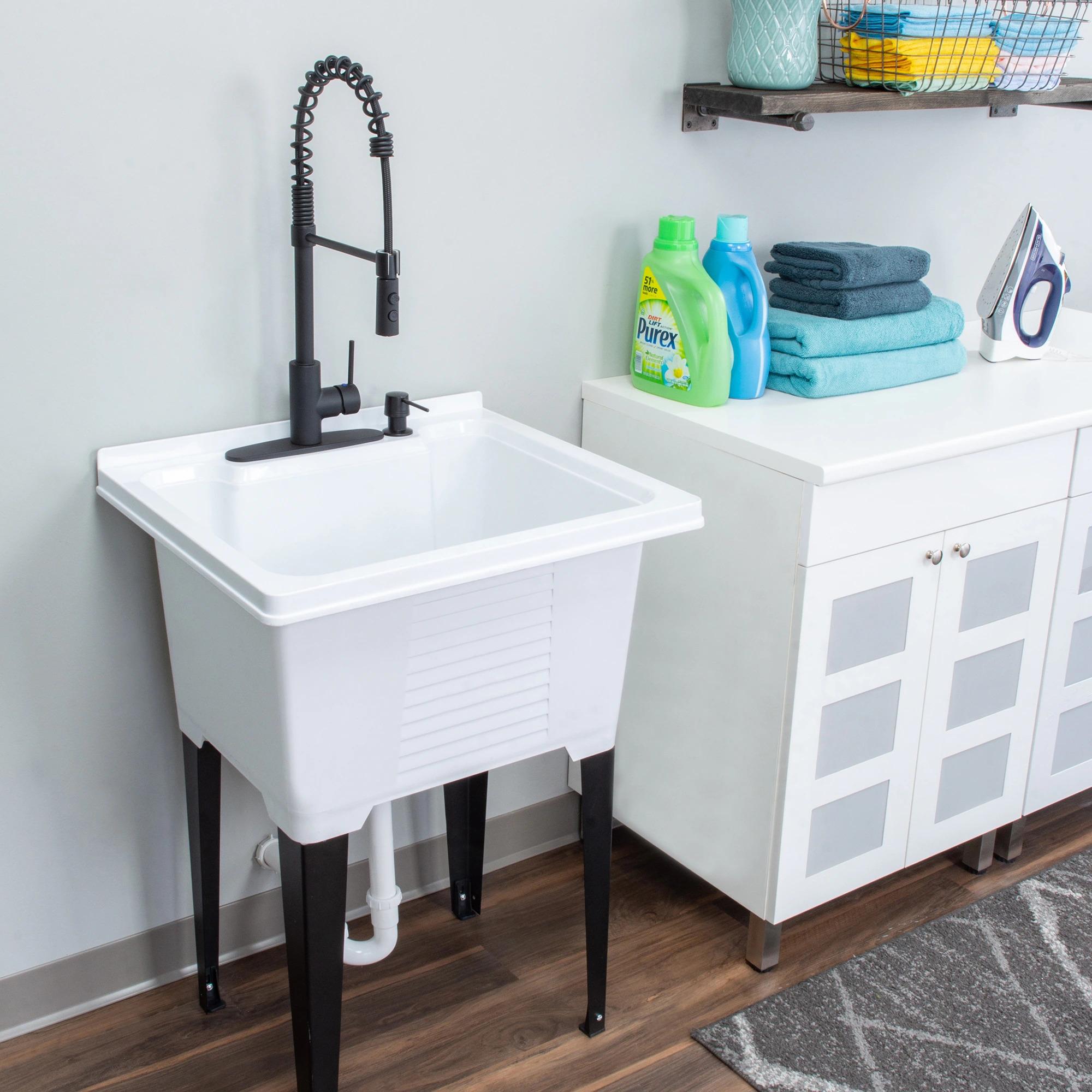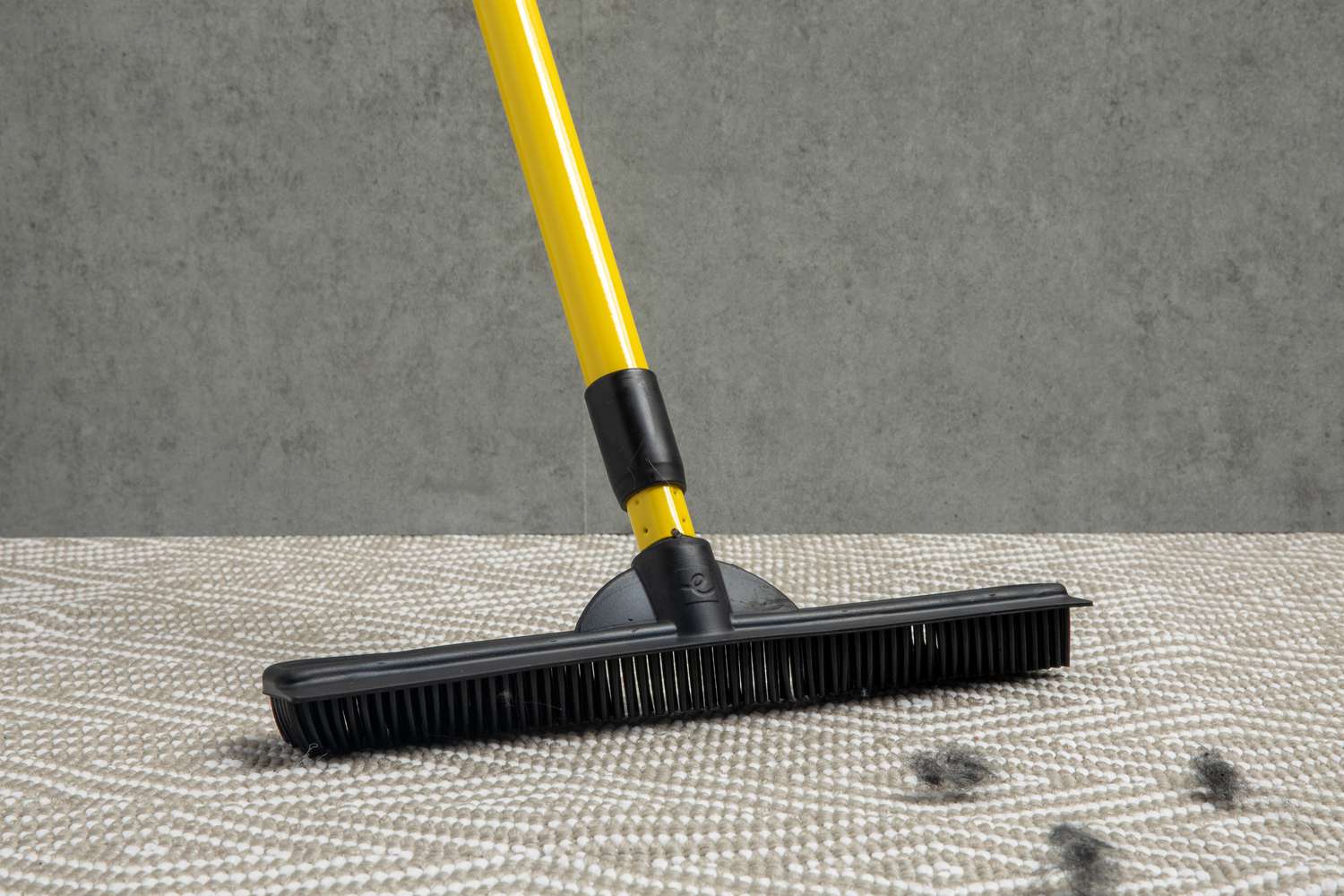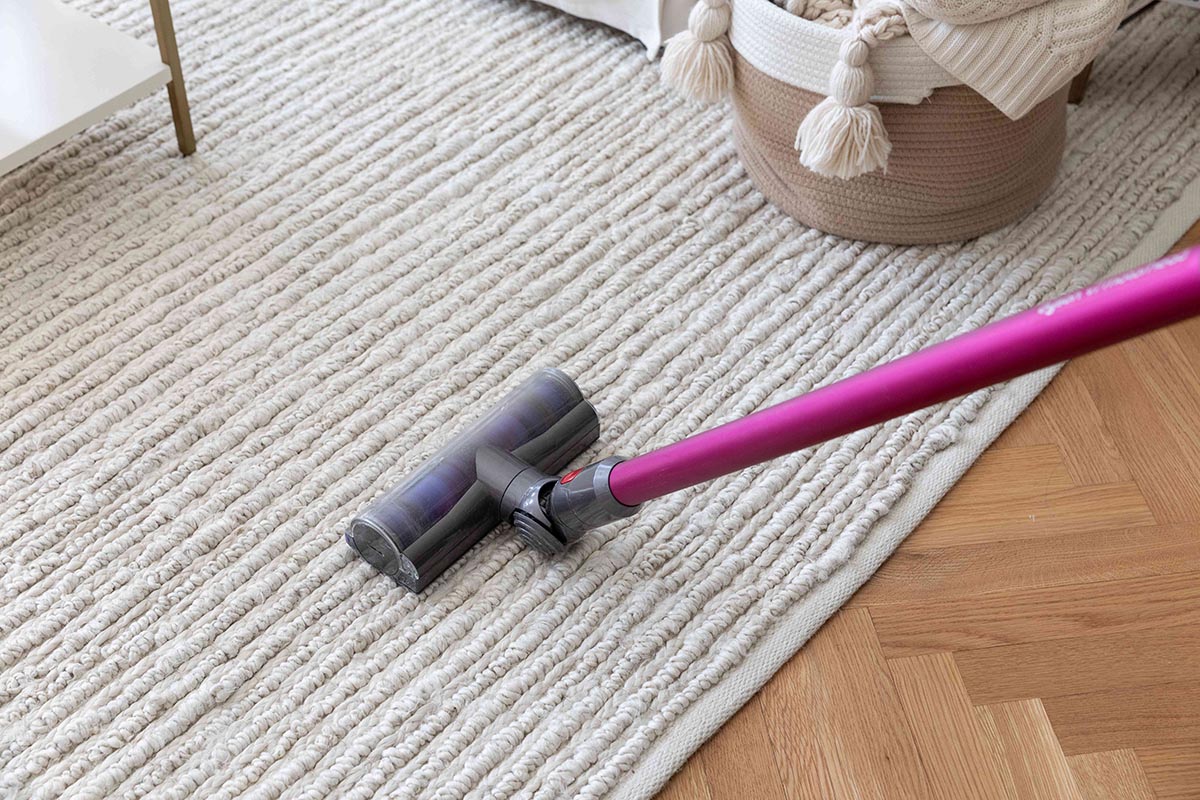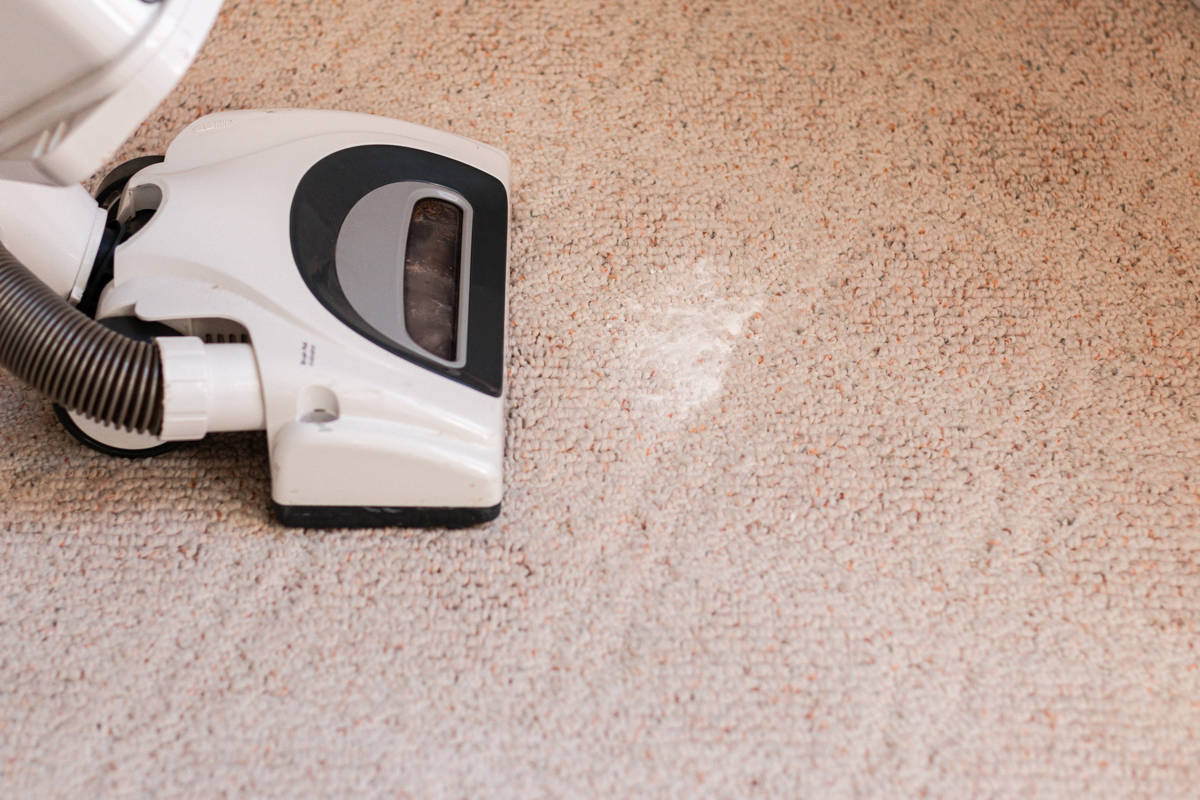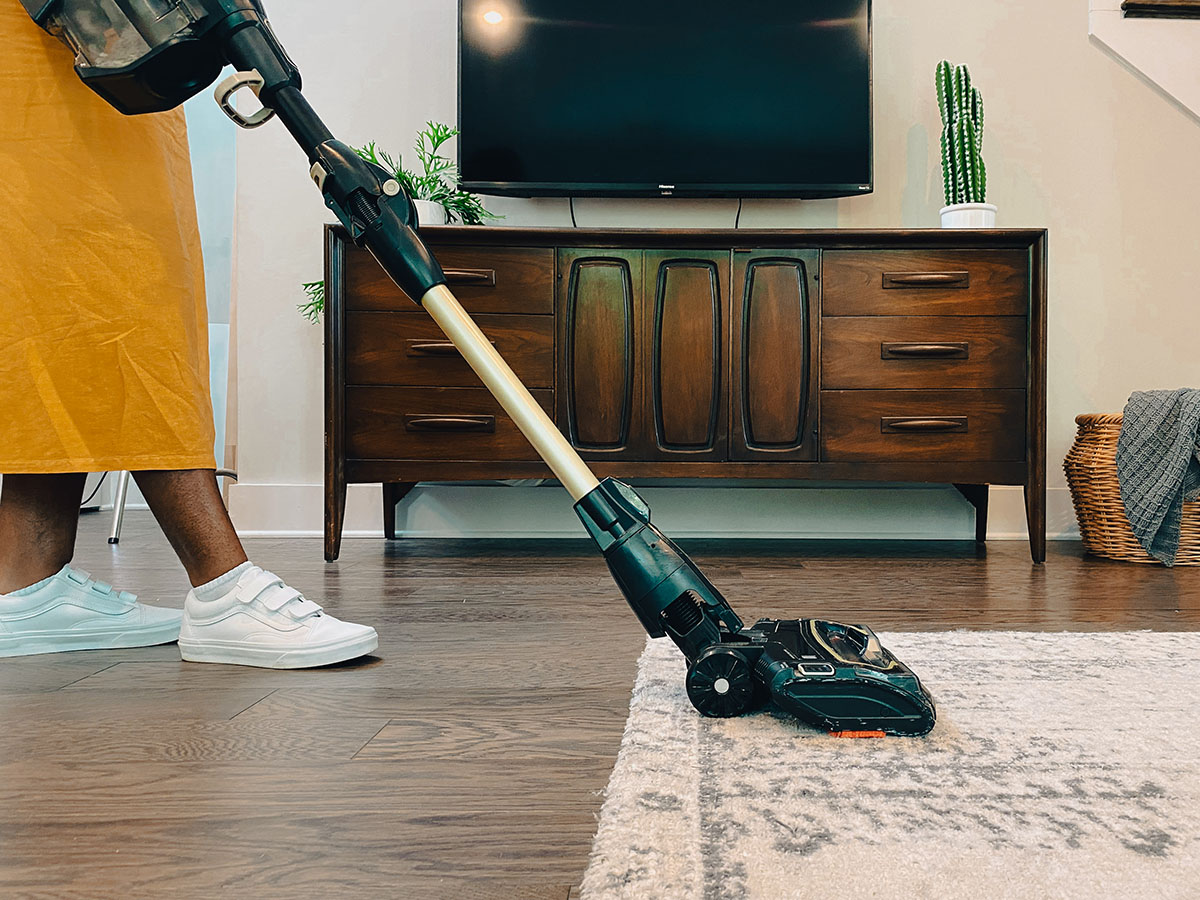Home>Articles>How Is A Carpet Knife Different From A Utility Knife
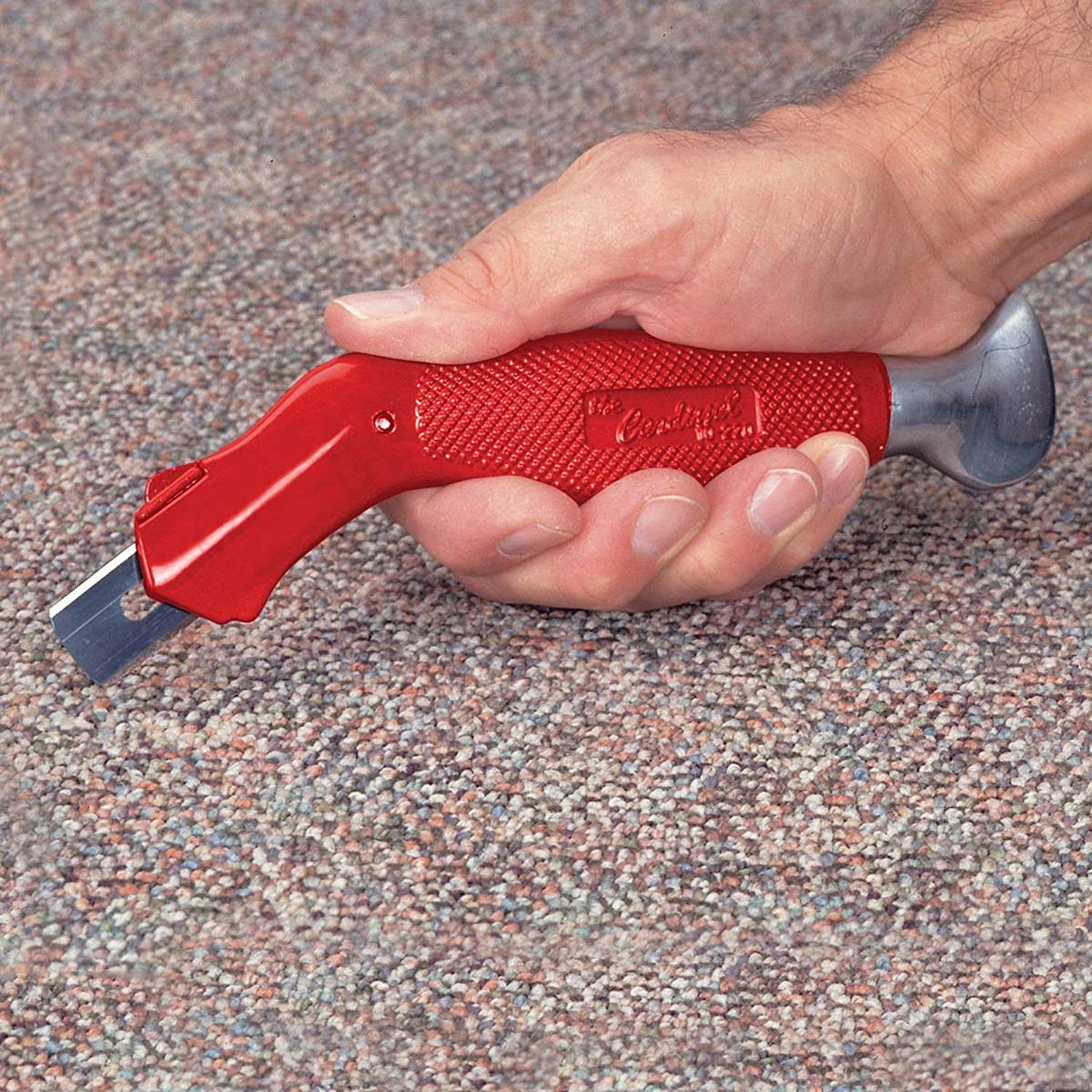

Articles
How Is A Carpet Knife Different From A Utility Knife
Modified: January 9, 2024
Discover the key differences between a carpet knife and a utility knife in this informative article. Find out which one is best suited for your needs.
(Many of the links in this article redirect to a specific reviewed product. Your purchase of these products through affiliate links helps to generate commission for Storables.com, at no extra cost. Learn more)
Introduction
Welcome to this informative article that explores the intriguing world of tools – specifically, the differences between a carpet knife and a utility knife. Whether you’re a DIY enthusiast, a professional contractor, or simply someone who loves learning about different tools, this article will provide you with a comprehensive understanding of the unique characteristics and applications of these two knives.
Both the carpet knife and utility knife are versatile cutting tools commonly found in many homes and workplaces. While they may seem similar at first glance, a closer look reveals distinct differences in their design, functionality, and intended use.
By understanding the features and purposes of each knife, you’ll be equipped with the knowledge to choose the right tool for the task at hand. So, let’s dive in and explore the world of carpet knives and utility knives!
Key Takeaways:
- Choose a carpet knife for precise carpet cutting, while a utility knife offers versatility for a wide range of materials and tasks. Prioritize safety and handle blades with caution for optimal cutting experiences.
- Understanding the differences between carpet knives and utility knives empowers you to select the right tool for your specific cutting needs. Prioritize safety, maintain sharp blades, and enjoy efficient and accurate cutting experiences.
Read also: 15 Amazing Carpet Knife for 2024
Purpose and Scope
The purpose of this article is to provide a comprehensive comparison between a carpet knife and a utility knife. We will delve into the distinctive characteristics of each knife, including their blade design, handle construction, versatility, and safety considerations.
In terms of scope, this article will primarily focus on the key differences between a carpet knife and a utility knife. We will examine their respective functionalities and cutting applications, highlighting the specific scenarios where one knife may be more suitable than the other.
Additionally, we will discuss the blade and handle designs of both knives, exploring their respective advantages and disadvantages. Safety is of utmost importance, so we will also touch upon safety considerations for both knives, offering tips on how to handle these tools responsibly to minimize the risk of accidents.
It is important to note that this article is not intended to endorse or promote any particular brand or model of carpet knives or utility knives. Rather, our goal is to provide an objective and informative overview of the two knives, enabling readers to make informed decisions when selecting the right tool for their specific needs.
Lastly, while this article aims to be comprehensive, it is important to remember that the world of tools is vast, and there may be other types of knives or variations of carpet knives and utility knives that are not covered in this particular discussion.
Now that we have established the purpose and scope of this article, let’s move on to understanding what exactly a carpet knife is and how it differs from a utility knife.
What is a Carpet Knife?
A carpet knife, also known as a carpet cutter or carpet trimmer, is a specialized cutting tool designed primarily for working with carpets and other soft flooring materials. It features a sharp, pointed blade that is typically longer and narrower than the blade of a utility knife.
The main purpose of a carpet knife is to accurately and cleanly cut through carpets for installation or repair purposes. Its blade is specifically designed to smoothly slice through thick and dense carpet fibers, allowing for precise cuts without causing excessive fraying or damage to the material.
Carpet knives often have a retractable blade mechanism, which allows users to control the depth of the cut. This feature is particularly useful when trimming carpets around corners, edges, or other obstacles. By adjusting the blade extension, users can ensure that they are cutting the carpet to the desired depth without risking cutting through the underlying padding or flooring.
Another distinguishing feature of carpet knives is their ergonomic handle design. The handle is often larger and more comfortable to grip, providing the user with a secure hold and improved control during cutting tasks. This ergonomic design minimizes hand fatigue and enhances precision, especially when working for extended periods of time.
Carpet knives are widely used in various settings, including residential installations, commercial projects, and even in the automotive industry. Whether you are a professional carpet installer or a DIY enthusiast, having a high-quality carpet knife in your tool kit is essential for achieving clean and accurate cuts when working with carpets.
Now that we have explored the basics of a carpet knife, let’s move on to understanding what a utility knife is and how it differs from its carpet-cutting counterpart.
What is a Utility Knife?
A utility knife, also known as a box cutter or a general-purpose knife, is a versatile cutting tool that is widely used in various industries and everyday tasks. Unlike a carpet knife, a utility knife is designed to handle a wide range of cutting applications, making it a must-have tool in any toolbox or household.
The defining characteristic of a utility knife is its retractable blade mechanism. The blade can be extended or retracted into the handle, allowing for safe storage and easy adjustment of the cutting depth. This feature makes utility knives highly adaptable, as users can adjust the blade extension to suit different materials and cutting requirements.
The blade of a utility knife is typically shorter and wider compared to a carpet knife. It is designed to be durable and sharp, capable of cutting through various materials such as cardboard, foam, plastic, leather, and even light-duty materials like drywall or rope.
One of the key advantages of a utility knife is its versatility. It can be used for a wide array of tasks, including opening packages, trimming materials, stripping wires, and scoring surfaces for precise cuts. The ability to easily swap out the blade for a fresh one when it becomes dull ensures consistent cutting performance across different projects.
Utility knives are available in different handle designs, ranging from basic plastic handles to more ergonomic and heavy-duty options. The choice of handle depends on personal preference, intended use, and specific requirements of the task at hand. Comfortable grip and control are important factors to consider, especially for tasks that require prolonged and precise cutting.
In summary, a utility knife is a versatile cutting tool that can handle a wide range of everyday cutting tasks. Its retractable blade design, durability, and adaptability make it an essential tool for tradespeople, DIY enthusiasts, and professionals alike.
Now that we have explored the characteristics and applications of both carpet knives and utility knives, let’s move on to compare the key differences between these two tools.
Key Differences between a Carpet Knife and a Utility Knife
While both a carpet knife and a utility knife are cutting tools, there are several key differences that set them apart in terms of design, functionality, and intended use. Let’s explore these differences in more detail:
- Blade Design and Functionality: One of the most noticeable differences between a carpet knife and a utility knife is their blade design. A carpet knife typically has a longer, narrower, and pointed blade, specifically designed for cutting through thick and dense carpet fibers. On the other hand, a utility knife generally features a shorter and wider blade that is more versatile and capable of cutting through various materials such as cardboard, foam, or plastic.
- Handle Design and Grip: Another distinguishing factor is the handle design and grip of the two knives. A carpet knife often has a larger and more ergonomic handle, providing a comfortable and secure grip. This is important for achieving precise cuts on carpets, especially when working for extended periods. In contrast, a utility knife may have a simpler handle design, offering a balance between functionality and ease of use for general-purpose cutting tasks.
- Versatility and Cutting Applications: While a carpet knife is primarily designed for cutting carpets and soft flooring materials, its use is limited to those specific applications. On the other hand, a utility knife is highly versatile and can handle a wide range of cutting tasks, making it suitable for various industries and everyday use. From opening packages to scoring surfaces for clean cuts, a utility knife is a go-to tool for many professionals and DIY enthusiasts.
- Safety Considerations: Safety is an important aspect to consider when using any cutting tool. Carpet knives often feature a retractable blade mechanism, allowing users to control the depth of the cut and minimize the risk of accidents. This feature is particularly useful when working around corners, edges, or obstacles. Utility knives also have a retractable blade, which can be locked in place for added safety. Additionally, utility knives may offer blade storage within the handle, ensuring easy blade replacement without the need for additional tools.
By understanding these key differences, you can confidently select the right tool for your specific needs and ensure optimal performance and safety during your cutting tasks. Now that we have explored the primary differences between a carpet knife and a utility knife, let’s move on to discuss further details about their blade design and functionality.
A carpet knife typically has a longer and wider blade compared to a utility knife, which is designed for general cutting tasks. The carpet knife is specifically designed for cutting and trimming carpet and other flooring materials.
Read more: How To Sharpen Knife With Sandpaper
Blade Design and Functionality
The blade design and functionality of a carpet knife and a utility knife are notably different, reflecting their respective purposes and cutting applications.
Carpet Knife Blade Design: A carpet knife typically features a long, narrow, and pointed blade specifically designed for cutting through thick and dense carpet fibers. The blade is often made of durable materials such as high-carbon steel or stainless steel, ensuring sharpness and longevity even with prolonged use.
The pointed shape of the blade allows for precise cutting, whether it’s making straight cuts during carpet installation or trimming excess fibers during carpet repair. The length of the blade allows for deep and controlled cuts, while the narrow width minimizes the risk of fraying or damaging the surrounding carpet material.
Utility Knife Blade Design: In contrast, the blade of a utility knife is shorter and wider compared to a carpet knife. It is designed to be versatile and capable of handling a wide range of materials and cutting tasks. Utility knife blades are commonly made from high-carbon steel or surgical-grade stainless steel for durability and sharpness.
The wider blade of a utility knife provides more stability during cutting, making it suitable for tasks such as slicing through cardboard boxes, cutting foam, or scoring surfaces for precise cuts. The shorter length allows for better control and maneuverability in tight spaces or intricate cuts.
Utility knives often have a serrated edge, allowing for easy cutting of tough materials such as leather or rope. Additionally, some utility knife blades may have a straight edge or a combination of both straight and serrated edges, giving users the flexibility to adapt to different cutting needs.
Both carpet knives and utility knives may have a retractable blade mechanism, allowing users to adjust the blade extension and control the cutting depth. This feature is especially important when working with different materials or when precision cuts are required.
Overall, the blade design and functionality of a carpet knife and a utility knife are tailored to their specific tasks. While a carpet knife excels in cutting through carpet fibers with precision, a utility knife offers versatility and adaptability for a wide range of cutting applications. Understanding the blade design and functionality of these knives is crucial in choosing the right tool for your specific cutting needs.
Now that we have explored the blade design and functionality of both knives, let’s move on to discuss the handle design and grip.
Handle Design and Grip
The handle design and grip of a carpet knife and a utility knife play a crucial role in providing comfort, control, and safety during cutting tasks. While both knives aim to offer a secure grip, the handle design differs to suit their specific applications.
Carpet Knife Handle Design: The handle of a carpet knife is often larger and ergonomically shaped to provide a comfortable grip and enhanced control. This design allows for extended use without causing strain or discomfort to the hand. Additionally, some carpet knives have textured or rubberized grips to further improve grip stability, especially when working in challenging or slippery conditions.
The ergonomic handle design of a carpet knife is essential when making precise and intricate cuts in carpets, where accuracy is key. The larger grip surface provides better control over the knife, allowing for smooth and accurate cutting without compromising the safety of the user.
Utility Knife Handle Design: The handle design of a utility knife may vary depending on the model and brand. While some utility knives have a simple handle design, others incorporate ergonomic features for improved comfort and control during general-purpose cutting tasks.
The shape and material of the handle may vary, from basic plastic handles to more advanced designs made from rubberized materials or featuring textured patterns for better grip. The primary focus of a utility knife handle is to provide a balance between comfort and functionality, allowing users to handle a variety of materials with ease.
Utility knives often feature a slim and compact handle design, making them easier to carry in a pocket or toolbox. The handle may also include additional features, such as a blade storage compartment for quick and easy access to spare blades, eliminating the need for separate storage or tools to change blades.
Both carpet knives and utility knives prioritize the user’s comfort and grip stability while handling the tools. The ergonomic design of a carpet knife handle facilitates precise and controlled cutting in carpet-related tasks, while the handle design of a utility knife emphasizes versatility and ease of use for a wide range of cutting applications.
Now that we have explored the handle design and grip of both knives, let’s move on to discuss the versatility and cutting applications of a carpet knife and a utility knife.
Versatility and Cutting Applications
When comparing a carpet knife and a utility knife, one of the key differences lies in their versatility and the range of cutting applications they are designed to handle.
Carpet Knife: As the name suggests, a carpet knife is primarily designed for cutting carpets and soft flooring materials. Its long, narrow, and pointed blade allows for precise cuts through thick and dense carpet fibers, ensuring clean and accurate results. Carpet knives are typically used for tasks such as carpet installation, repairs, or modifications.
Carpet knives are essential tools for professional carpet installers, flooring contractors, as well as DIY enthusiasts working with carpets. They excel in making straight cuts, trimming excess fibers, and creating precise openings for vents, outlets, or corners. The retractable blade mechanism in carpet knives allows for controlled depth adjustment, ensuring the underlying padding or subfloor is not damaged during the cutting process.
Utility Knife: In contrast, a utility knife is known for its versatility and wide range of cutting applications. From cutting cardboard boxes, opening packages, and trimming various materials such as foam, plastic, or leather, a utility knife is a go-to tool for many professionals and DIY enthusiasts.
The short and wide blade of a utility knife, whether with a straight or serrated edge, allows for efficient slicing and scoring of different materials. Utility knives are widely used in industries such as construction, warehousing, crafting, and general household tasks. The retractable blade mechanism provides safety and convenience when storing or changing blades.
Utility knives are particularly useful for tasks such as trimming materials, cutting ropes or wires, scoring drywall, or even acting as makeshift screwdrivers in certain situations. With their versatility and ease of use, utility knives provide a reliable cutting tool for a variety of projects and day-to-day tasks.
While a carpet knife excels in its specific application of carpet cutting, a utility knife offers adaptability across a wide range of materials and cutting needs. Understanding the cutting applications and versatility of these knives will help you choose the right tool for your specific task.
Now that we’ve discussed the versatility and cutting applications, let’s move on to explore the safety considerations associated with using both a carpet knife and a utility knife.
Safety Considerations
When working with cutting tools like a carpet knife or a utility knife, it is essential to prioritize safety to prevent accidents and injuries. Here are some important safety considerations to keep in mind:
- Blade Handling: Always handle the blades with caution, especially when changing or replacing them. Ensure that the knife is switched off or retracted before attempting to handle the blade. Use proper tools or mechanisms provided by the knife to safely swap out blades.
- Cutting Direction: Be mindful of the cutting direction and always cut away from your body. This reduces the risk of accidentally cutting yourself if the knife slips or the material gives way unexpectedly.
- Proper Grip: Maintain a firm and secure grip on the handle of the knife. This helps ensure better control and stability during cutting tasks. Avoid excessive force or overextending your reach, as it may result in loss of control and potential accidents.
- Protective Gear: Consider wearing personal protective equipment (PPE) such as gloves or safety goggles to protect yourself from potential injuries. For instance, when cutting carpets, wearing gloves can provide added grip and prevent accidental cuts to your hands.
- Maintaining Sharpness: Keep your blades sharp to ensure cleaner and more controlled cuts. Dull blades can require more force, leading to slips and potential injuries. Regularly inspect and sharpen the blades or replace them as needed.
- Storage and Transport: Properly store and transport your knives in a secure manner. Utilize blade locking mechanisms or retract the blades fully before storing them in a dedicated pouch or container. This helps prevent accidental exposure to the blade when reaching into your toolbox or bag.
- Awareness of Surroundings: Always be aware of your surroundings when using a knife. Ensure there is adequate space, good lighting, and a stable cutting surface. Be cautious of nearby objects or people to avoid accidental injuries.
Remember, these safety considerations are general guidelines, and it is important to review and follow the specific safety instructions provided by the manufacturer of your carpet knife or utility knife. By practicing good safety habits and using these tools responsibly, you can minimize the risk of accidents and enjoy a safe cutting experience.
Now that we have covered the safety considerations, let’s end our discussion with a summary of the key points we have learned about carpet knives and utility knives.
Read more: How To Store Chef Knife
Conclusion
In conclusion, understanding the differences between a carpet knife and a utility knife is essential for selecting the right cutting tool for your specific needs. While both knives serve the purpose of cutting, they have distinct characteristics that cater to different applications.
A carpet knife is designed specifically for cutting through thick and dense carpet fibers with precision. Its long, narrow, and pointed blade, along with an ergonomic handle, allows for clean and accurate cuts during carpet installation, repair, or modification.
On the other hand, a utility knife offers versatility and adaptability across a wide range of cutting tasks. With its shorter, wider blade, a utility knife can cut through various materials such as cardboard, foam, plastic, or leather. It is a go-to tool for professionals and DIY enthusiasts alike, providing efficiency and convenience in everyday tasks.
When using either a carpet knife or a utility knife, it is important to prioritize safety. Handle the blades with caution, maintain a proper grip, and follow safety guidelines provided by the manufacturer. Use personal protective equipment if necessary and ensure that the blades are sharp and properly stored when not in use.
In summary, choose a carpet knife when working with carpets or soft flooring materials, and opt for a utility knife when you need versatility for a range of cutting applications. By understanding the distinctions and adhering to safety precautions, you can effectively utilize these tools to achieve accurate cuts while minimizing the risk of accidents.
Whether you are a professional contractor, a DIY enthusiast, or simply someone who appreciates the value of quality tools, both the carpet knife and the utility knife play important roles in your cutting tasks. So, equip yourself with the right tool, consider the task at hand, and always prioritize safety.
Now go forth, armed with the knowledge of carpet knives and utility knives, and tackle your next cutting project with confidence!
Frequently Asked Questions about How Is A Carpet Knife Different From A Utility Knife
Was this page helpful?
At Storables.com, we guarantee accurate and reliable information. Our content, validated by Expert Board Contributors, is crafted following stringent Editorial Policies. We're committed to providing you with well-researched, expert-backed insights for all your informational needs.




